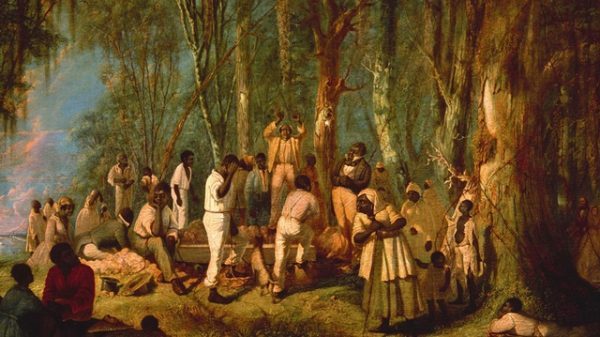Introduction
The Great Awakening occurred in 1740 and prompted many slaves to convert to Christianity. However, after they converted, they were prevented from practicing the religion without the oversight of a white slave owner due to what were called black codes. Black codes were laws that were passed in an attempt to maintain white supremacy. When first introduced, slaves were hesitant to accept Christianity because it was told to them through a Eurocentric viewpoint. Eventually, slaves began to embrace and transform the religion into something that fit their spiritual desires. The Invisible Church served as a beacon of light and a reminder of freedom for many slaves during this time period.
What was the Invisible Church?
The Invisible Church was a secluded place in which slaves would meet to practice their version of Christianity. Every Sunday, they would gather in the woods and worship in whatever way resonated with them. This way of practicing was extremely dangerous and if they were caught, they could be sentenced to a punishment far worse than death. Practicing this religion included prayers, testifying, preaching and communal singing. In this safe space, they were able to worship as they please and embrace their own version of Christianity. Along with these practices, came a sense of freedom, jubilation and belonging. The songs that were sung tended to be a mixture of spirituals that may or may not have had a double meaning (also referred to as double entendre). Enslaved persons would gather to sing and dance with various movements including hand clapping, shouting and other body movements. This free-form expression gave slaves the ability to unite while they endured the horrors of slavery.

What Does This Say About the Black Community?
Overall, slaves during this time faced many challenging obstacles in order to express themselves in a way that was meaningful to them. They put their lives on the line in order to preserve and continue to cultivate what is now known as Black Culture. Their ability to persevere through these struggles in spite of every obstacle that was placed in front of them shows great resiliency. This same resiliency was instilled in future generations to come and will forever be a part of black culture.


